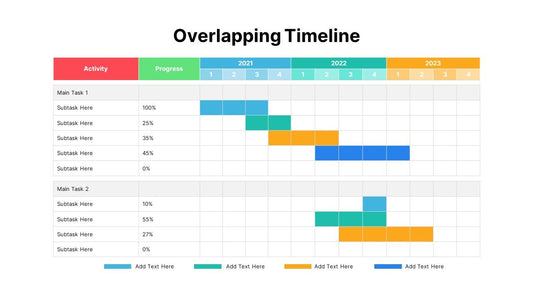
Top 5 Indian Products to Export in 2025
Share
Top 5 Indian Products to Export in 2025: Unlock Global Growth
India's export landscape is rapidly evolving, driven by rising global demand, government support, and a shift toward sustainable, value-driven trade. Whether you're a budding exporter, a homegrown brand like Jain’s Home Store, or an aspiring entrepreneur, 2025 brings new opportunities to profit from Indian-made products in international markets.
Here are the top 5 most profitable Indian products to export in 2025—selected based on global demand, scalability, affordability, and "Make in India" advantages.
1. Handicrafts and Home Decor Products
Why It's Booming:
With a global shift toward sustainable living and ethnic aesthetics, Indian handcrafted products—from terracotta décor to macrame wall hangings—are gaining worldwide attention. Countries like the US, UK, Germany, and Australia love authentic Indian décor with a story behind it.
Key Products to Export:
-
Wooden carvings, wall art, and tribal masks
-
Brass and metal sculptures
-
Macrame planters and textile hangings
-
Table runners, cushion covers, and handwoven rugs
Export Tip:
Start small with Etsy, Amazon Global, or your own Shopify store. Focus on Instagrammable aesthetics, storytelling, and eco-friendly packaging.
2. Ayurvedic and Herbal Products
Why It's Booming:
As the world moves away from synthetic ingredients, the market for natural wellness products is exploding. India's 5,000-year-old Ayurveda system is now a sought-after solution for everything from skincare to stress relief.
Key Products to Export:
-
Herbal teas and detox blends
-
Essential oils and incense
-
Ayurvedic skincare kits
-
Organic hair oils and shampoos
Hot Markets:
USA, Europe, UAE, Japan, and South Korea
Export Tip:
Get FSSAI certification and explore collaborations with influencers in the wellness space. Comply with each country's labeling and ingredient guidelines.
3. Fashion Jewelry and Accessories
Why It's Booming:
Budget fashion is huge worldwide—especially among Gen Z and millennial consumers. India produces affordable, stylish, and diverse accessories, from oxidized earrings to beaded necklaces and waist belts.
Key Products to Export:
-
Bohemian and tribal jewelry
-
Kundan and Meenakari sets
-
Beaded anklets, bangles, nose pins
-
Crossbody bags, potli purses, and designer totes
Market Insight:
Fast fashion brands globally are sourcing from India due to cost-efficiency + variety. Your curated pieces could attract boutique owners in the US or pop-up retailers in Dubai.
Export Tip:
Bundle jewelry + accessories for festive gifting. Use platforms like Faire.com (for B2B buyers) or Instagram Shops (for direct sales).
4. Ready-to-Eat (RTE) Indian Foods
Why It's Booming:
Indian cuisine is beloved worldwide, but not everyone has the time or skill to cook it from scratch. The RTE (Ready-to-Eat) category—especially vegetarian meals—is in high demand in the US, Canada, UK, and Middle East.
Key Products to Export:
-
Instant biryani, rajma chawal, khichdi
-
Curry kits and spice mixes
-
Indian snacks (namkeen, samosa mix, chivda)
-
Gourmet chutneys and pickles
Export Tip:
Packaging is key—ensure microwave-safe, shelf-stable formats. Tie up with Indian grocery chains abroad or online grocers like iShopIndian.
5. Cotton and Organic Textiles
Why It's Booming:
India is one of the largest producers of cotton and natural fabrics. With global brands under pressure to reduce carbon footprints, there's a rising preference for organic cotton, khadi, and bamboo fabrics made in India.
Key Products to Export:
-
Cotton bed linens, bath towels
-
Handblock printed scarves and stoles
-
Organic baby clothes
-
Summer-friendly cotton dresses and kaftans
Global Markets:
Nordic countries, Canada, France, Netherlands, and Japan
Export Tip:
Certifications like GOTS (Global Organic Textile Standard) can boost credibility. Partner with slow fashion labels or minimalist brands looking to white-label your Indian-made textiles.
How Jain’s Home Store Can Take Advantage
At Jain’s Home Store, we’ve already seen the impact of curated pop-up stores, budget-friendly fashion, and unique gifting solutions. Here’s how we (and other small brands) can leverage export opportunities in 2025:
✅ Build Export-Ready Catalogs
-
Categorize products by use case: home décor, festive gifts, lifestyle accessories
-
Add detailed measurements, material info, and care instructions in English
✅ Optimize for Global E-commerce
-
Use platforms like Indiamart International, Etsy, Faire, and Shopify
-
List in USD, offer PayPal payments, and showcase customer reviews
✅ Use SEO + Social Proof
-
Create content in English around each product’s story
-
Collaborate with Indian-origin creators living abroad to market to niche audiences
✅ Participate in B2B Exhibitions
Events like IHGF Delhi Fair, Bharat Tex, and Dubai Expo allow you to meet international buyers directly.
Final Thoughts
India’s export future is not just about big industrial players—small businesses like Jain's Home Store have huge potential to shine in global markets by offering unique, value-packed products. The key lies in understanding consumer preferences, packaging with care, pricing smartly, and embracing digital-first trade models.
2025 is your year to think global. Whether it’s a macrame wall hanging, a floral sling bag, or a jar of mango pickle, there’s someone across the globe ready to pay for authentic, affordable Indian products.
Ready to take your products global?
Stay tuned to the Jain’s Home Store Blog for more export tips, supplier insights, and product trends. 🌏✨




